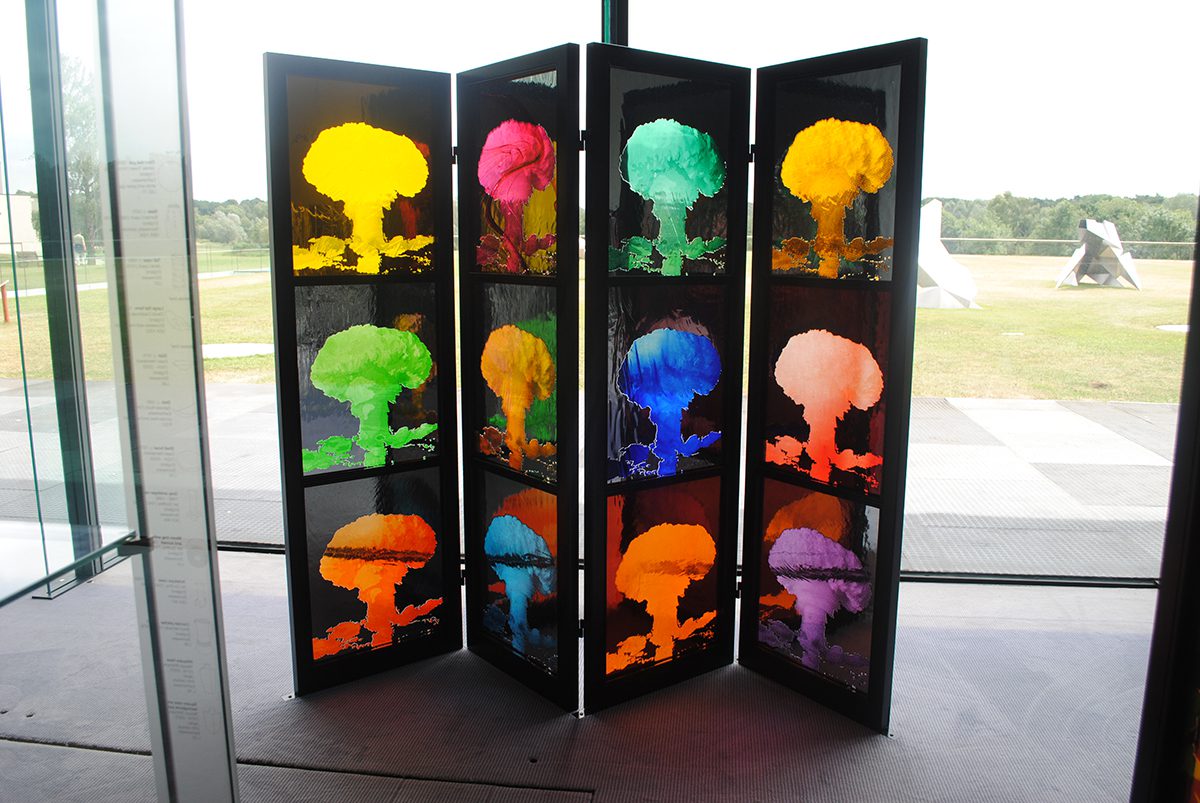The Sainsbury Centre for Visual Arts is currently celebrating its 40th anniversary, and celebrated stained glass artist Brian Clarke can remember when the centre was merely a sketch on the back of a napkin. The building was designed by architect Norman Foster, with what was at the time a unique approach – integrating building with landscape – using the style of structural expressionism, the centre is situated on the edge of the University of East Anglia’s campus – housing the collection of Lord and Lady Sainsbury, gifted to the university in 1973.
The centre’s great windows not only form a relationship between the art and the external green vistas, but also allow works to be seen in natural light, expressing the building’s environmental integration. It would therefore seem fitting that the finally-celebrated artist should take advantage of that natural light for the installation of over 30 works.

Clarke first appeared on the London scene in the 1970s [he is long-standing friends with Paul McCartney and Jules Holland] but during this period in art history it was not ‘de rigueur’ for artists to hang out with celebrities – and this diminished Clarke’s artistic reputation among his peers, limiting the artist’s career.
But it would seem that Clarke’s ‘punkish’ tenacity has finally paid off – with that particular energy flooding out with the artist’s coloured light, communicating the richness of the subject and its history, without it ever becoming ecclesiastical.

Brian Clarke, Orchid And The Void Of Lust, 2017. Sainsbury Centre For Visual Arts. Photo: P A Black © 2018.
Some 30 freestanding stained glass screens form the centrepiece of this ambitious show. These are individual works produced over the last three years, forming a maze-like installation piece, with the backdrop of the Sainsbury Centre’s monumental windows.
Light is of course an intrinsic element of Clarke’s work – whether in this case natural, or in other areas of the exhibition, synthetic – as with the artist’s blatantly Warholian ‘Ordinary Man’, 2007 – one of Clarke’s leaded works – which is strikingly reminiscent of Warhol’s ‘Self-portraits and Skulls’ series – ‘Ordinary Man’ is a work reflecting loss, the iconic face of death, stylised yet still disturbing.

It is therefore fitting that the piece is lit with synthetic light: a dead artificial medium in contrast to the metamorphic qualities of natural light, as with the artist’s aforementioned stained glass maze, where the works become transformative ‘projectors’ of light – with colours slowly stretching out across the exhibition space – as the day’s shadows grow longer.

Through the juxtaposition of material and environment the artist paints with light, reflecting poetic and emotional states via a deft use of colour, and how that colour interacts and transforms when illuminated by natural moving light – or how the work doesn’t change via the illumination of still synthetic light.
Yet it’s entirely possible that Clarke’s practice has been slightly misconstrued, the artist’s material is not glass, Clarke’s ‘material’ is light. Where Turner studied light in all its facets, in reality this artist does more than ‘paint with light’, Clarke sculpts with photons.
Lead image: Brian Clarke, Manhattan, 2018. Sainsbury Centre For Visual Arts. Photo: P A Black © 2018.
Words: Paul Black @Artjourno, photos: P A Black © 2018
Brian Clarke: The Art of Light – Sainsbury Centre For Visual Arts – 17 June until 14 October 2018

